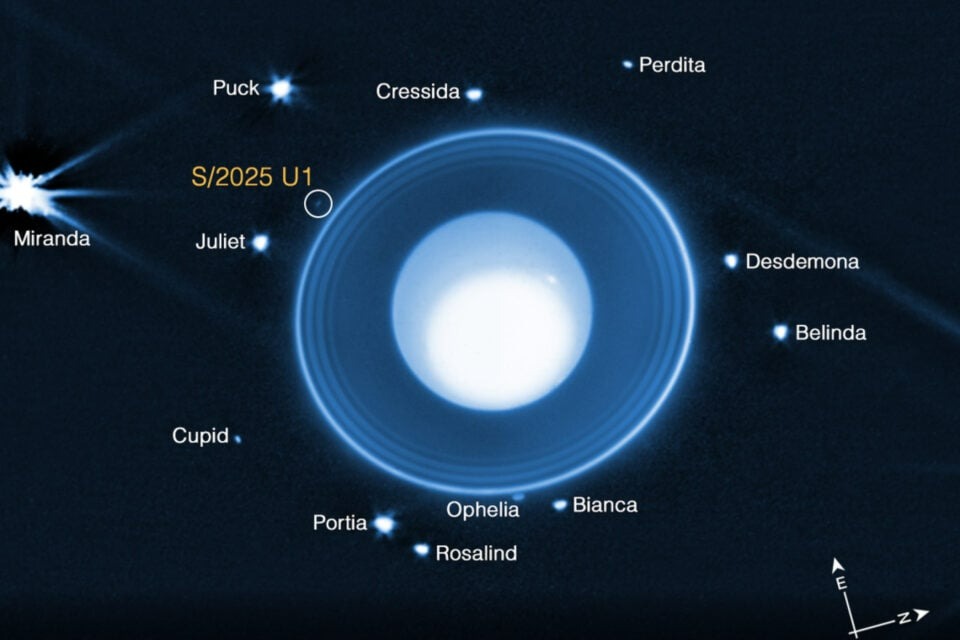Tiny objects hiding in the outer solar system have dodged detection for decades, but the James Webb Space Telescope just proved that era is over. Meet S/2025 U1—a previously invisible moon orbiting Uranus that’s so small and faint it makes finding a grain of sand on a beach look easy.
Infrared Vision Reveals What Human Eyes Cannot
This six-mile-wide rock orbits just 35,000 miles from Uranus, completing each lap in under 10 hours. Dr. Maryame El Moutamid from the Southwest Research Institute spotted it using JWST’s Near-Infrared Camera during a February survey. “It’s a small moon but a significant discovery, which is something that even NASA’s Voyager 2 spacecraft didn’t see during its flyby nearly 40 years ago,” El Moutamid explained.
The discovery bumps Uranus’s moon count to 29 and demonstrates JWST’s staggering sensitivity. While Voyager 2 revolutionized our understanding of the ice giant in 1986, it lacked the infrared precision needed to detect objects this dim.
Think of it like upgrading from a flip phone camera to an iPhone 15 Pro—suddenly you’re capturing details that were always there but invisible to older technology.
A Solar System Full of Secrets
S/2025 U1 orbits among Uranus’s inner ring system, threading between larger moons Ophelia and Bianca. Its detection at magnitude 25.5 in infrared light required ten separate long-exposure images to confirm—a testament to both JWST’s capabilities and astronomers’ patience.
Matthew Tiscareno from the SETI Institute noted that “no other planet has as many small inner moons as Uranus, and their complex interrelationships with the rings hint at a chaotic history.” This tiny world likely represents just the tip of a hidden iceberg of undiscovered satellites.
More Discoveries Coming
The moon will eventually receive a proper name following Uranian tradition—likely drawn from Shakespeare or Alexander Pope characters. But the real excitement lies in what else might be lurking out there. If JWST can spot something this small around Uranus, imagine what other cosmic breadcrumbs await discovery throughout our solar system.
This space discovery represents astronomy’s new normal, where yesterday’s impossible detections become routine surveys. The universe just got a little less mysterious and a lot more crowded.





























